Project Overview
Wade Park Avenue has been identified as a priority corridor through the City of Cleveland's Complete and Green Streets (CGS) Program. This program aims to design streets that expand travel opportunities for modes like walking, biking, and transit; improve green infrastructure; and improve safety for all roadway users. This webpage is focused on the project area between E. 66th Street and E. 118th Street (approximately 2.2 miles).
View the Project Area Fact Sheet View the Crash Data Fact Sheet
Why Wade Park?
Wade Park Avenue is selected for upcoming improvements between E. 66th Street and E. 118th Street to improve current roadway conditions and make the corridor safer and more welcoming for everyone.
As part of the Complete and Green Streets Program, the Transportation Infrastructure Advisory Committee (TIAC) reviewed the project on December 5, 2024. This committee provides design input at the earliest stages of a project's planning. This helps shape projects that add more greenery, improve safety, and create better transportation options for all users.
Wade Park is also a key connection in our growing bike network for many east side neighborhoods. As shown on the project area map below, separated bike lanes on Wade Park will connect to a shared use path on East 66th Street, which will connect to the Superior Midway, separated bike lanes on East 55th Street, the lakefront, and more. You can learn more about our bikeway vision network on our Cleveland Moves webpage.
This project aligns with our Vision Zero commitment to end crashes that result in fatal and serious injuries. There were 112 crashes on Wade Park between 2020-2024, with 4 of those crashes causing serious injury.
Project Area Map:
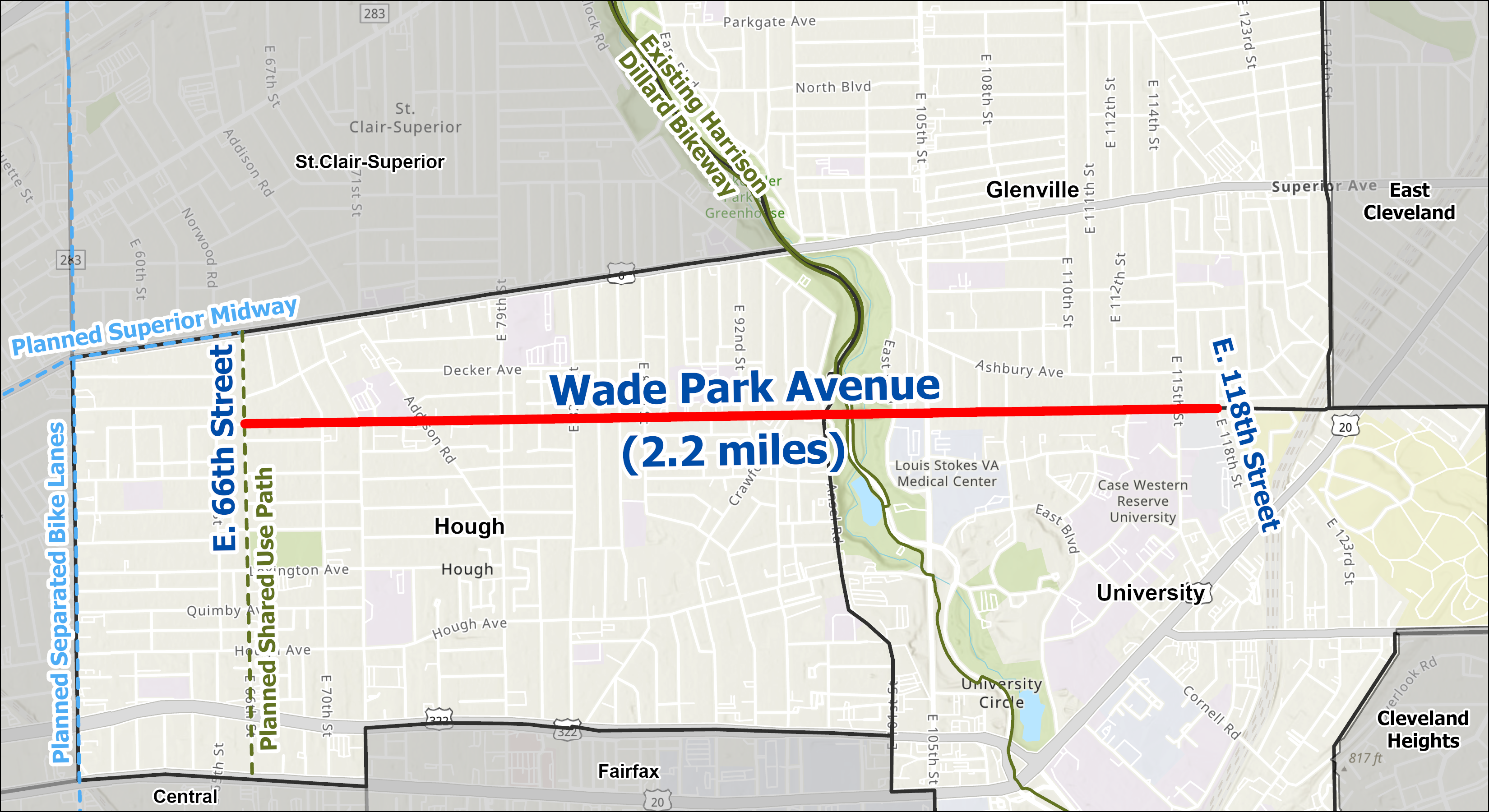
Conceptual Design - Provide Your Input!
A conceptual design for the Wade Park Avenue project was developed based on feedback from the Transportation Infrastructure Advisory Committee. This early design includes features such as roundabouts, mini-roundabouts, separated bike lanes, added greenery and street trees, and other improvements to make the corridor safer and more inviting for everyone.
This is an early concept, and your input will help shape the final design. City staff are attending community meetings to meet residents where they are and hear their feedback. You can also share your thoughts online by using the link below or using the comment form at the bottom of this page. We want to hear from you!
View the Conceptual Design and Provide Feedback
Existing Conditions: The image below shows the existing conditions for the majority of Wade Park Avenue. This includes a single drive lane in each direction and on-street parking, which is time-restricted throughout most of the project area.

Conceptual Design: The image below shows the current conceptual design for the majority of Wade Park Avenue. This includes maintaining a single drive lane in each direction and introducing separated bike lanes.
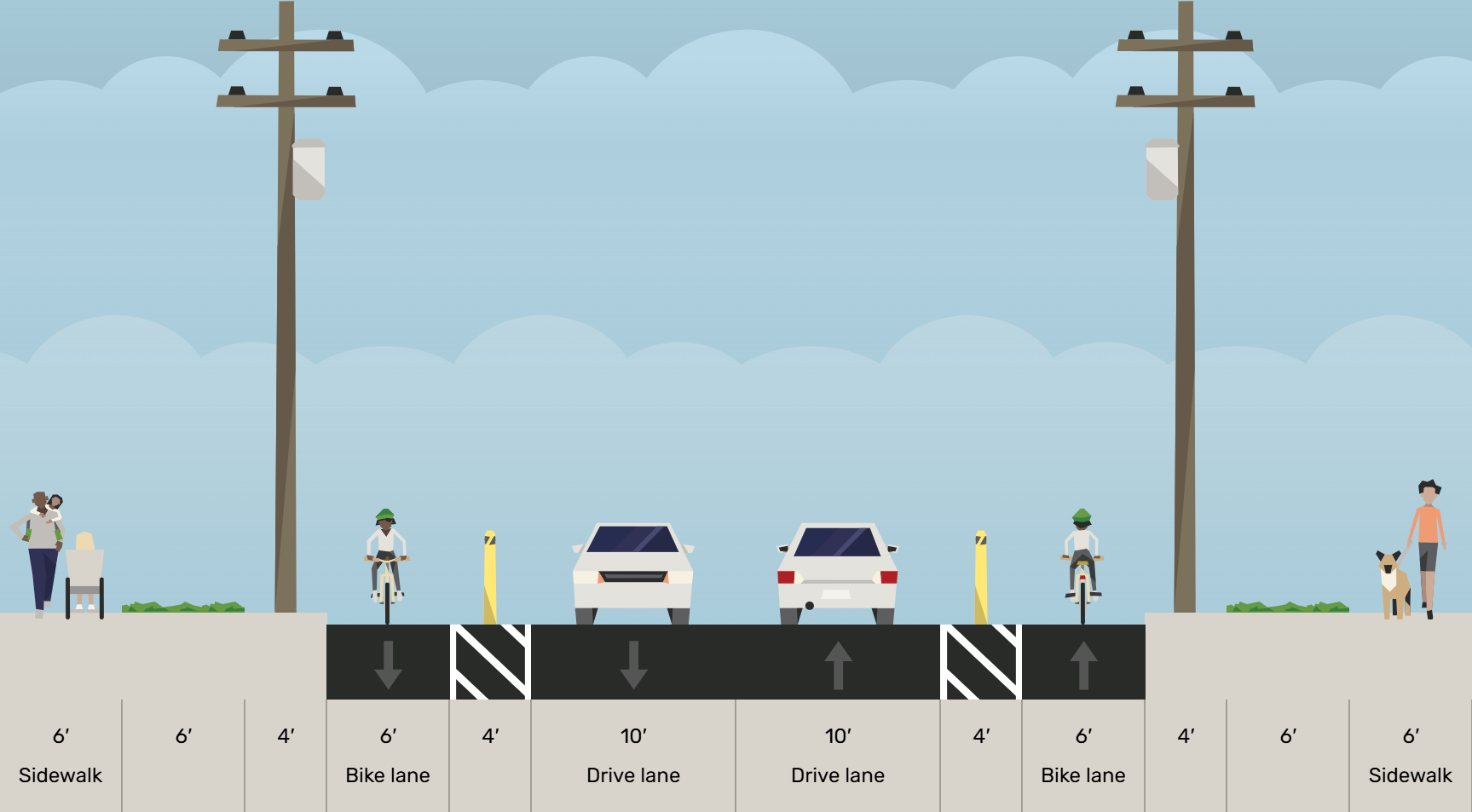
Engagement
Throughout 2025 and 2026, we'll be out at community events around Wade Park Avenue to let people know about the project and collect your feedback. Here's a list of events we have attended or will be attending:
| Event | Location | Date | Time |
| Ward 9 Neighbor to Neighbor Community Meeting View the presentation | Tinkham Veale University Center 10038 Bellflower Road Cleveland, OH 44106 | 10/21/25 | 6-7pm |
| Ward 7 Wade Park Avenue Community Meeting | Daniel E Morgan K-8 School 8912 Morris Court Cleveland, OH 44106 | 11/13/25 | 4-5pm |
| This list will be updated regularly with our event schedule. | |||
Project FAQs
This webpage will be updated regularly with Frequently Asked Questions as the project develops.
A Complete Street is a street designed for everyone — people of all ages and abilities, whether they’re walking, biking, rolling, taking transit, or driving. These streets make it safer and easier for everyone to get around. Complete Streets can include features like sidewalks, bike lanes or paths, safer crosswalks, enhanced bus stops, and other improvements that help people travel comfortably and safely.
A Green Street adds environmentally friendly features such as street trees, landscaping, recycled materials, and systems that manage stormwater in a sustainable way.
Together, Complete and Green Streets help make our neighborhoods safer, greener, and more inviting places to live and travel.
Roundabouts are an alternative to a traditional intersection. The most common justification for a roundabout is safety. This is because roundabouts only have 8 potential conflict points compared to 32 at a traditional intersection.
Studies by the Federal Highway Administration (FHWA) show that when roundabouts replace a traffic signal, there is a 48% reduction in total crashes and nearly 80% drop in serious injury and deadly crashes.
On Wade Park Avenue, the most crash type is angle crashes at intersections (also referred to as a T-bone crash). Roundabouts are a proven measure to prevent these types of crashes. A roundabout is currently being proposed at the Ansel Road intersection.
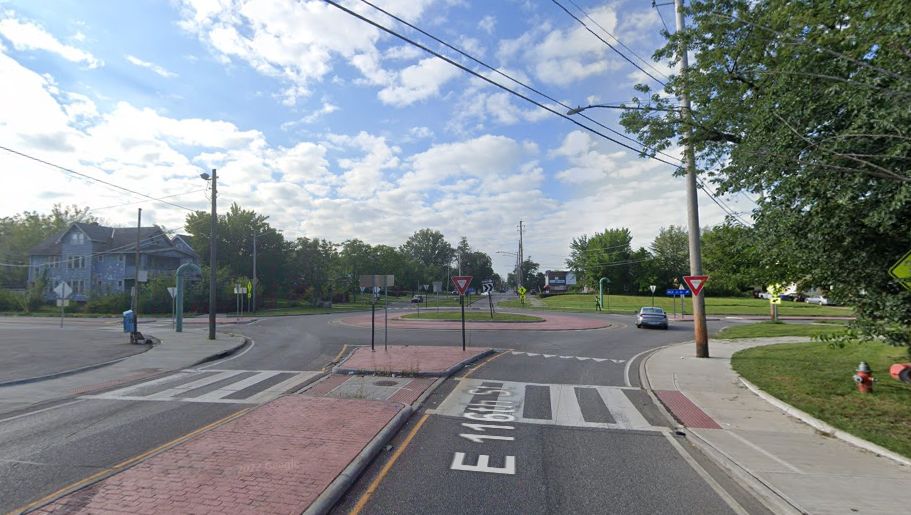
Mini-roundabouts provide the same safety benefits as a regular-sized roundabout at intersections where space is constrained. Mini-roundabouts are often designed with a mountable central island so that larger vehicles (such as trucks and shuttles) can easily and safely travel through the intersection.
On Wade Park Avenue, the most common crash type is angle crashes at intersections (also referred to as a T-bone crash). Roundabouts are a proven measure to prevent these types of crashes. Mini-roundabouts are currently being proposed at the intersections of E. 71st, E. 82nd, East Blvd, E. 108th, and E. 115th.
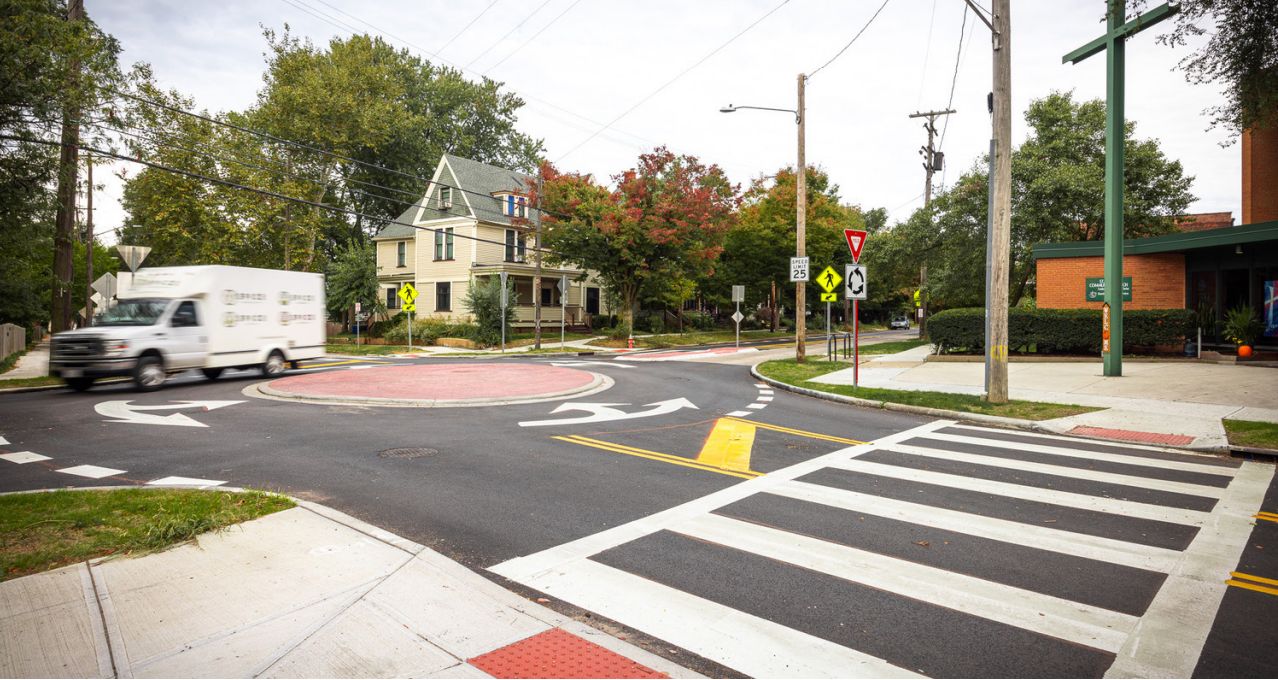
Separated bike lanes make the street safer for everyone using it, no matter how they travel. Physical separation increases comfort for people on bikes and on the sidewalk. It also visually narrows the road for drivers which leads to slower, safer vehicle travel speeds. We can use different materials to physically separate bike lanes, including plastic flexible delineators and concrete curb or jersey barriers.
Separated bike lanes are proven to improve safety for everyone on the road, not just bike riders. Separated bike lanes:
- Reduce average maximum vehicle speed by 28%
- Reduce crashes for all modes by 30-50%
Wade Park Avenue currently has no bicycle facilities. Many sections of Wade Park are wider than necessary, which encourages drivers to speed above the 25 mph speed limit. A traffic count collected on Wade Park near E. 107th Street recorded an average speed of 29 mph and 85th percentile speed of 34 mph. These speeds are considerably fast for a largely residential street.
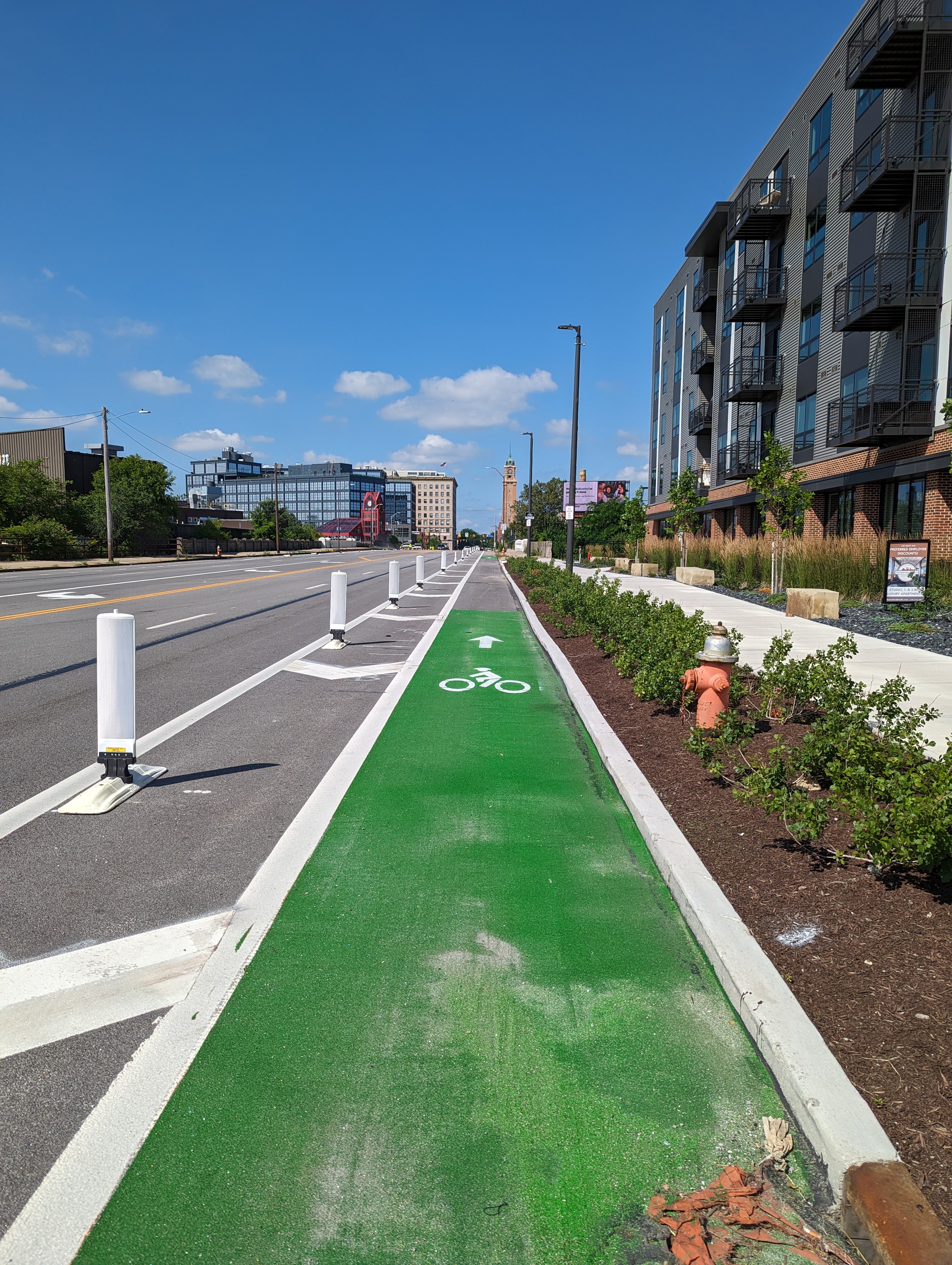
Email Sign-Up and Comment Form
We want to hear from you! Use the form below to share your thoughts or questions and sign up to stay informed with project updates by email.